Unlike the hair on our head, which falls out and grows back in day in and day out, your chickens’ feathers have to last all year. By the time late summer rolls around, their feathers are rough-edged and worn out. Sometimes the tail feathers are the only ones that look ragged.
Sometimes the tail feathers are gone.
Your hens won’t molt at the same time. In my flock, Florence remains broody, and the Rhode Island Reds and Amber continue to lay.
But, Onyx is fully into the molt.
As is Pearl, the cochin. What a mess. The larger feathers are all akimbo.
Neck feathers are sparse.
The old feathers on her back have fallen out, and new feather shafts are pushing their way out. If you notice a change in your hen’s behavior, this could be why. Ow.
To see an animation of how feathers unfurl and grow, go here – and then read everything else at this wonderful spot created by the Cornell Lab.
For more information about the molt in chickens (including what to feed) read my FAQ.
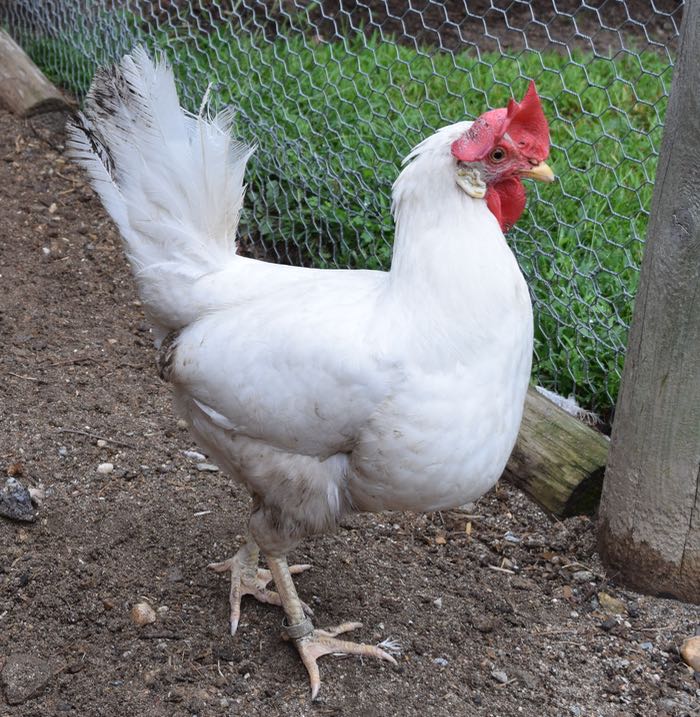
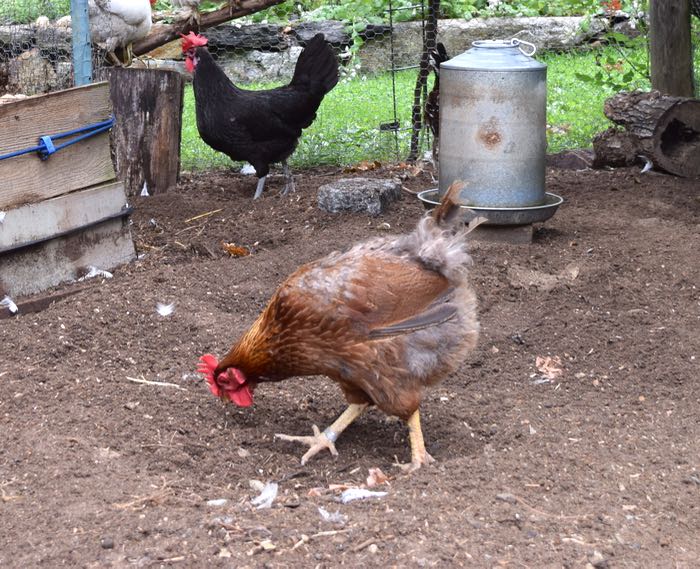

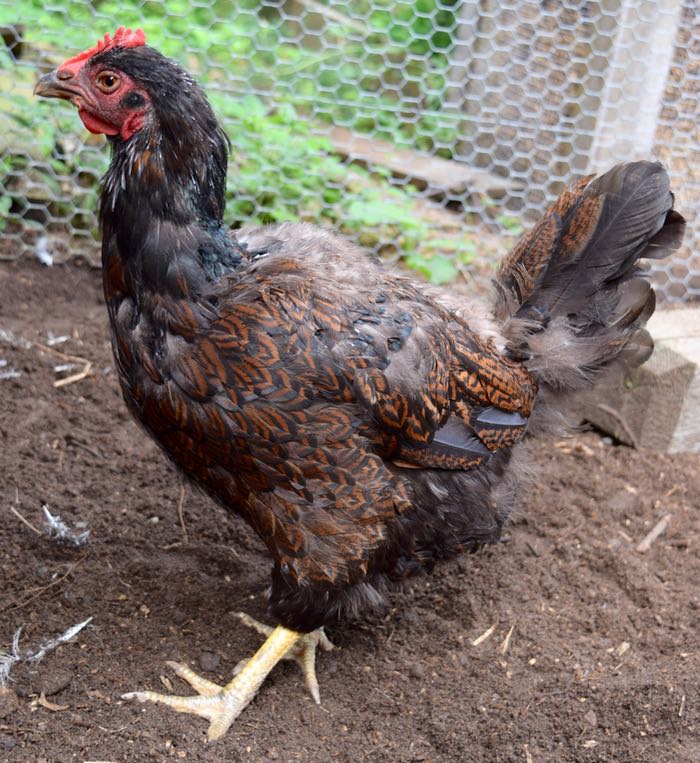
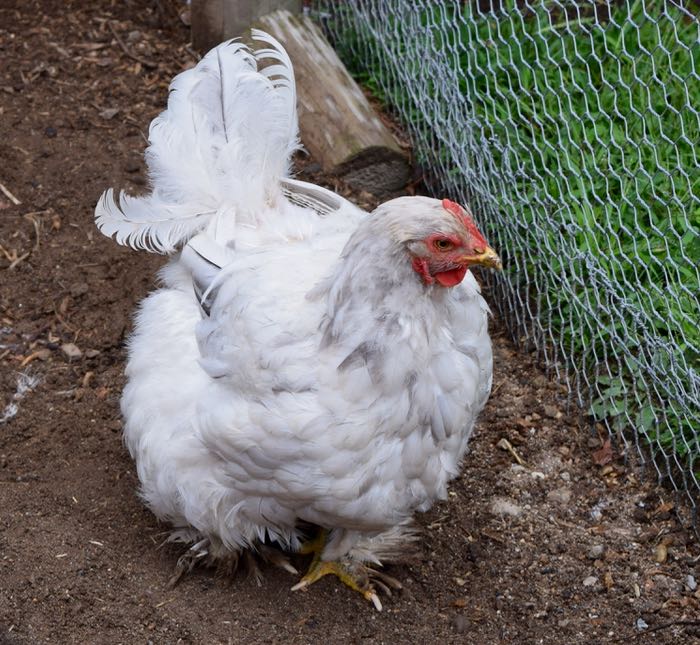
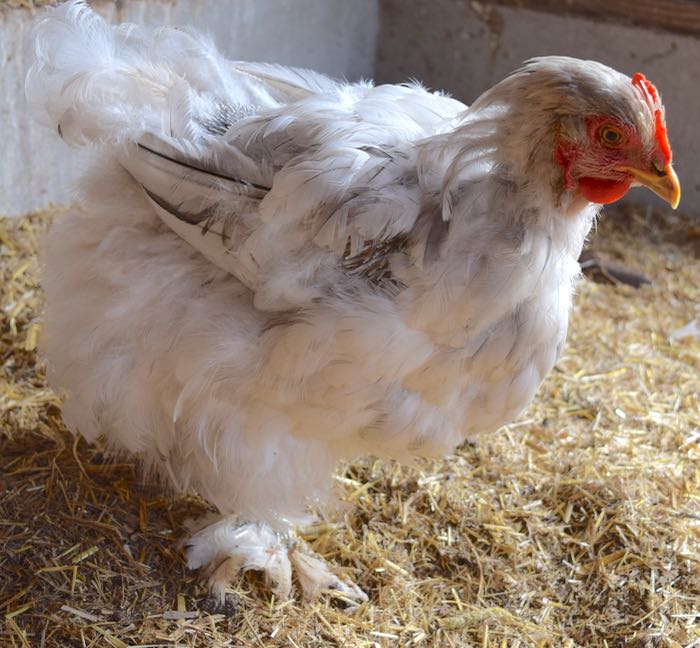
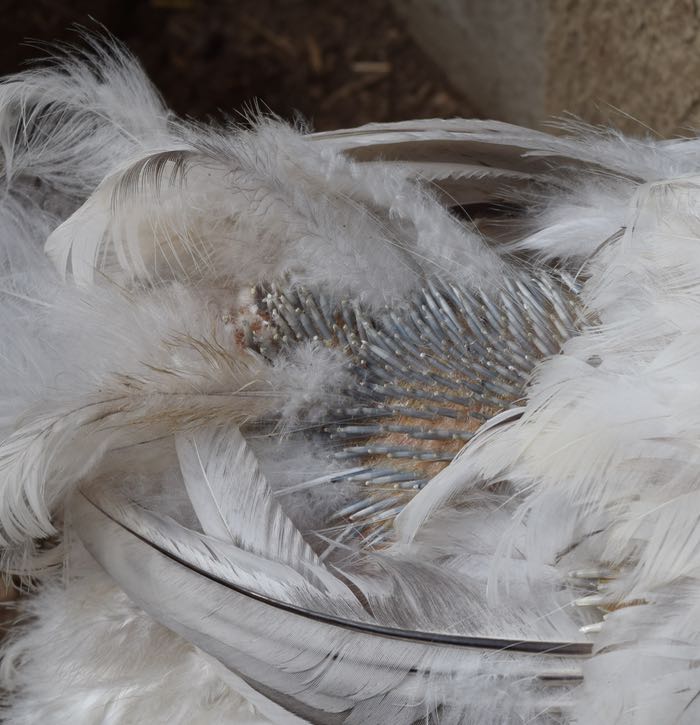

OWWWW!! Poor things! Every time I see this it gives me the shudders. Having pointy things growing out of your body! I luuuuve birds, but I would never want to be one! :D
Oh my that does look painful.
This may be a stupid question, but since Pearl has feathered feet, does she loose them and regrow on her feet. If that is the case then she must be miserable.
Not a stupid question – I almost included a photo of her molting feet, but it came out blurry. They are as unattractive as you might imagine :)
Ouch is right: I really feel for them when their feather shafts start growing in, because it looks so uncomfortable.
This may sound strange, but I’m really hoping mine will start soon, because I don’t want a repeat of last year when I had two hens go into a winter molt in January, when temps regularly plummeted to -27C at night and didn’t go above -10C during the day. I had to bring one inside for a week because she had dropped probably 80% of her feathers all at once, and I actually saw her shivering in the run. Sitting in full sun. Sheltered from the wind. The other hen shed her feathers in patches, so she was better able to cope with the cold. I noticed that the down-side of her patch molt was that it took quite a while to grow in her new coat, whereas the hen who dropped her old coat all at once grew her new coat in fairly quickly.
My first clue that Henny Penny is molting came when she started going into the nest box at night. Usually I’ve been able to coax her out for a bite to eat and then to join her sisters on the roost but last night she stayed in the box all night. She is starting to look like Onyx and has two tail feathers left. She is always the first to start molting and does it in a dramatic fashion. I do feel sorry for her because she looks so uncomfortable.
I read the FAQ about feed but I wondered what extra or different feed you give your girls during the molt. Except for one of mine which is still laying the others are in a heavy molt and being very picky about the layers pellets and I worry they are not eating enough. They eat a lot of grass (does this have any goodness) as they have part of the lawn, when it stops raining (if ever) I will dig over there soil and shrub area so they can hunt for tasty bits. But is there any other food they can have to make sure they are eating enough ??
My take on what to feed hens during the molt is in the linked FAQ in the post – that’s a post on molting. Basically, you don’t have to, but you can, give a supplement. I’m sure that your hens are eating enough :)
Thanks, I had read that link, but what I meant was would you give them a different food than other than layers during the molt.??
The basic laying hen pellets are fine. And even the hens that aren’t molting can handle the extra protein. So, if you feel you want to help out the molters, everyone gets a boost.